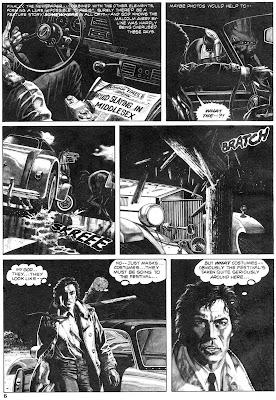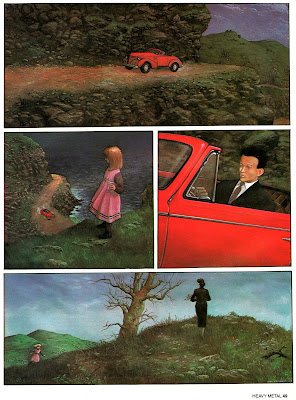by Doug Moench and Paul Gulacy
Episode One (from Eerie #109, February 1980)
One of the most impressive strips ever to appear in a Warren magazine was the three-part 'Blood on Black Satin', written by Doug Moench, and gifted with outstanding artwork by Paul Gulacy.
The inaugural installment appeared in Eerie 109 (February 1980) and parts two and three in issues 110 (April 1980) and 111 (June 1980).
Posted below is the first episode; the succeeding episodes will be posted in the future here at the PorPor Books blog.
These scans are taken from the original comic and done at 300 dpi, using the graytone setting on my Plustek book scanner. I then used Corel Photo-Paint to autoadjust the images for fading and sharpness, although this creates jpeg files each 18 - 22 MB in size - hopefully the web page won't crash when loading.
For reasons that are unclear, some of the pages present with a sepia tint, despite being auto-adjusted; I suspect this is an issue with Blogger, as when I examine the images in Photo-Paint, they display no tinting.
I expect they will be as good as one can get, at least until Dark Horse / The New Comic Company produce all three episodes in an upcoming Eerie Presents hardbound volume....










































































